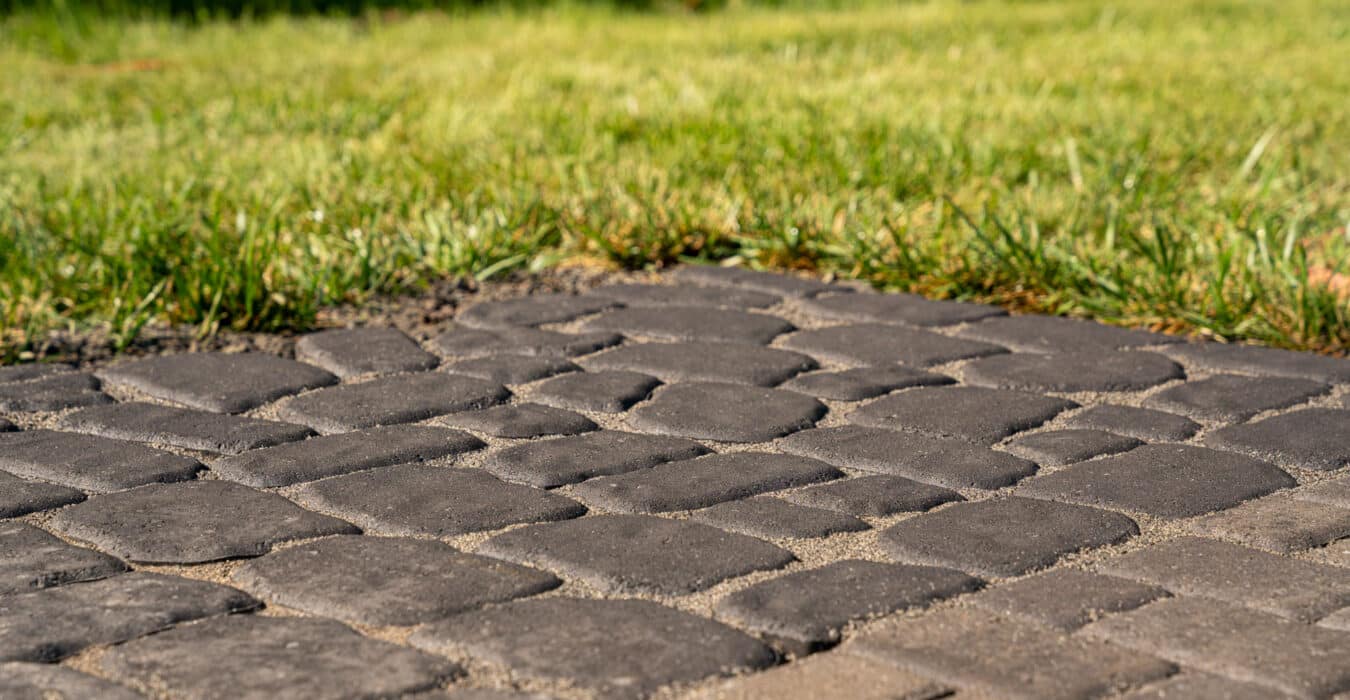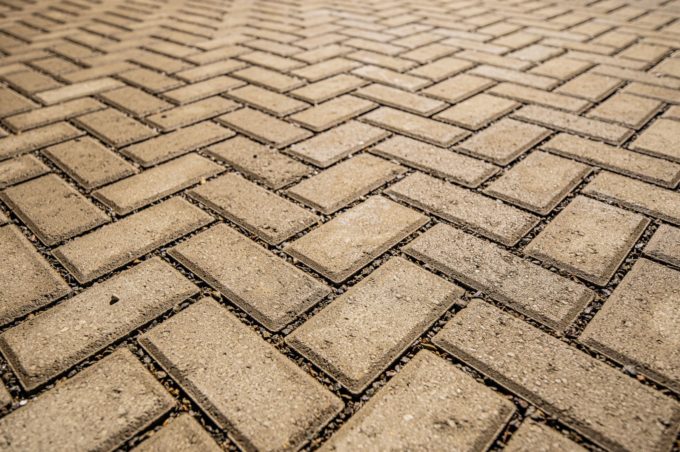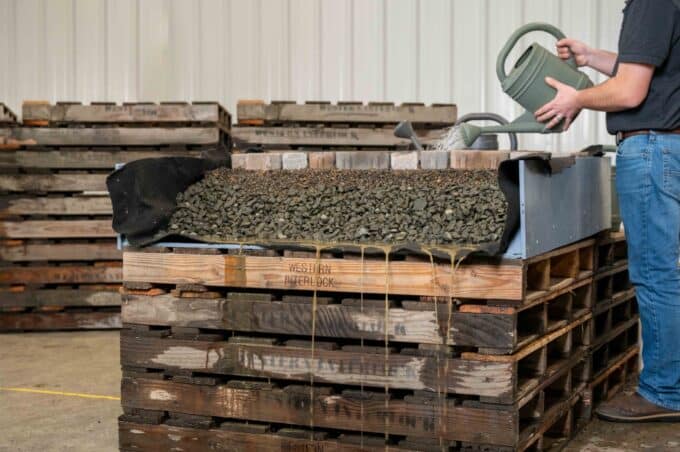Imagine your meticulously designed paver project—a stunning patio, a charming walkway, or perhaps a decorative outdoor space that reflects your creativity and vision.
Every stone is perfectly placed, and the overall structure is a testament to your hard work. However, a crucial detail often goes unnoticed but plays a vital role in the longevity and stability of your paver project—the joint filler.
The choice of joint filler isn’t just a functional decision; it’s an opportunity to enhance the beauty and resilience of the project. This article will explore five distinctive ways to fill your paver joints, each offering benefits and considerations.
Whether you’re aiming for a classic, low-maintenance finish or a modern, durable solution, these options will help you make an informed choice that aligns with the specific needs of your project.
1. Fine, Dry Sand
The most common joint material is bagged sweeping sand.
You’ll find sand at virtually any building supply store, like the Basalite Fine Sand we like to use. It fits relatively well in your standard joint width, typically about 1/16” or 1/8″.
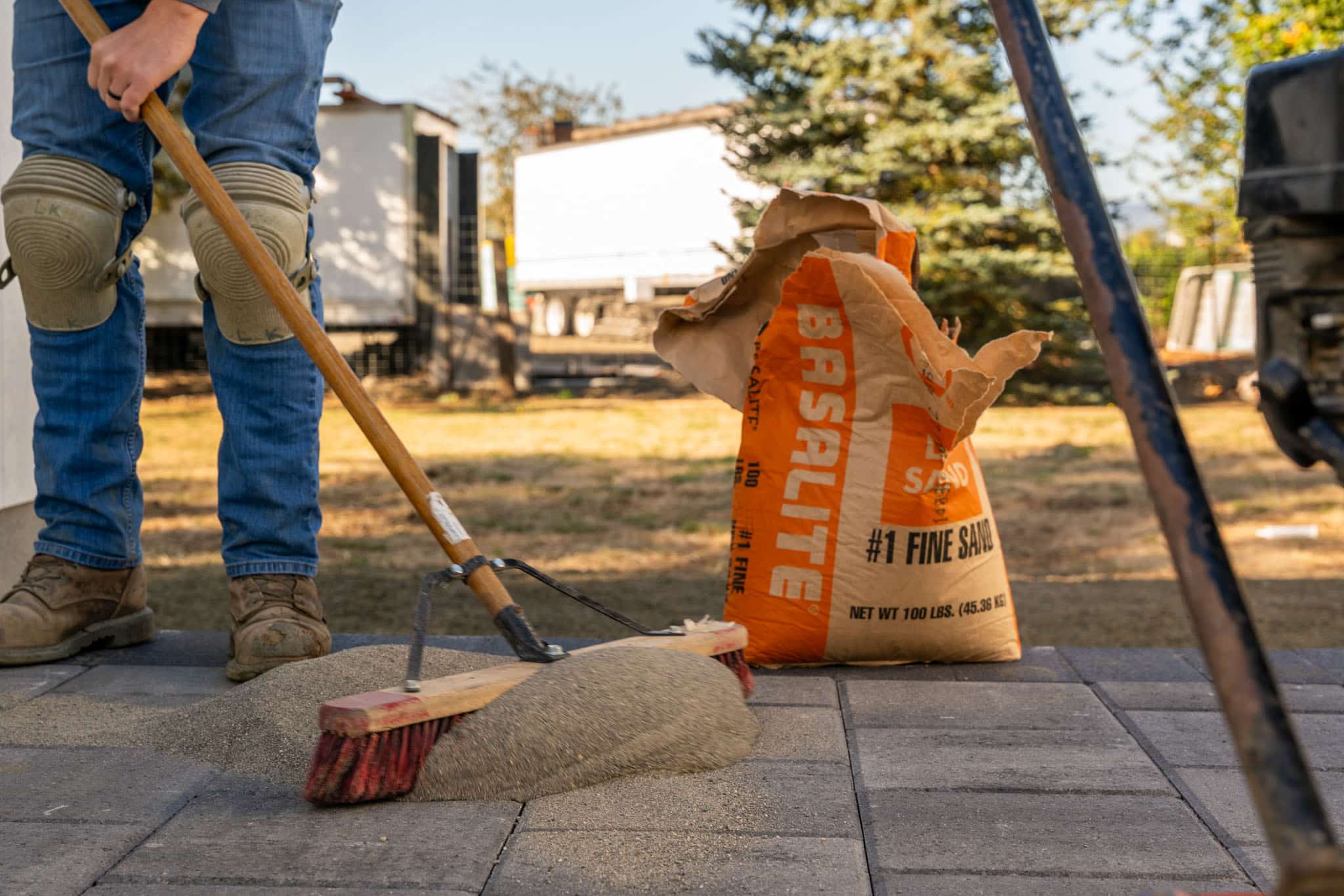
All you have to do is cut open the bag, sweep the sand into your paving stones—and maybe compact your stones to help wiggle it in—blow off the excess, and you’ll have a good, functional joint sand. The only drawback to regular bagged sand is that it can accumulate moss and weeds depending on your climate and application over time.
2. Polymeric Joint Sand
The second of our narrow joint materials is polymeric sand. We use SEK SUREBOND’s PolySweep, but many other polymeric sands are sold like it.
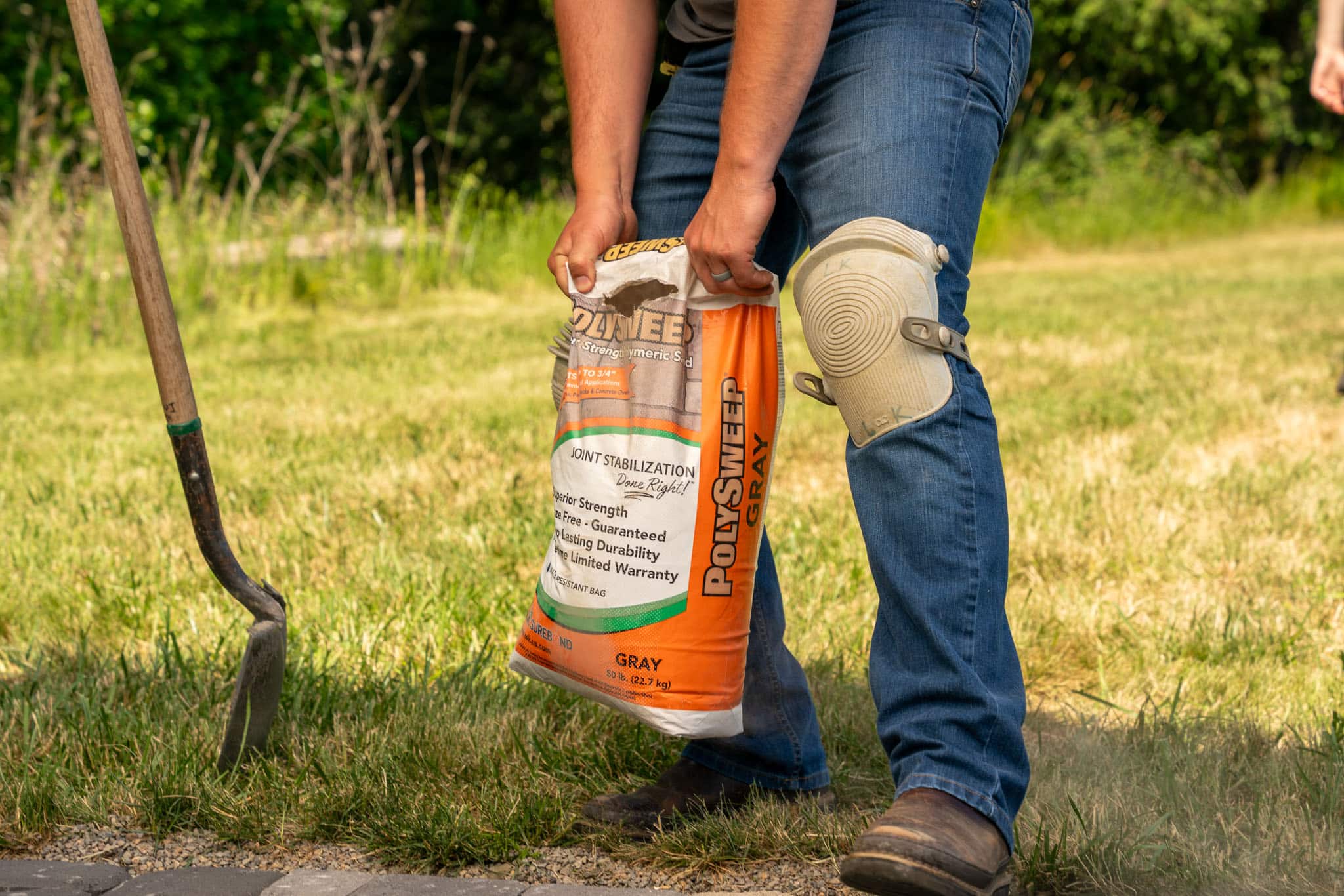
The process for all of them is the same. You sweep the sand into your joints and activate it with water. The sand can reduce moss and weeds and is easy to clean. The drawback of polymeric sand is that it might not be readily available and could be expensive.
Know that it must be installed on a dry day, with dry material and dry bedding material. If any moisture gets on the paving stone or an area where the sand is not supposed to be before it’s activated, you could end up with some cosmetic issues.
3. Polymeric Wide-Joint Sand
While the first two sands listed above are different options for a standard or narrow joint application, we’ll now consider some broader joint application products.
One that we like is PolySweep X-Treme Wide. There are many extra-wide joint polymeric sand options, and the goal is all the same. They have more polymers than standard polymeric sand to bridge significant gaps.
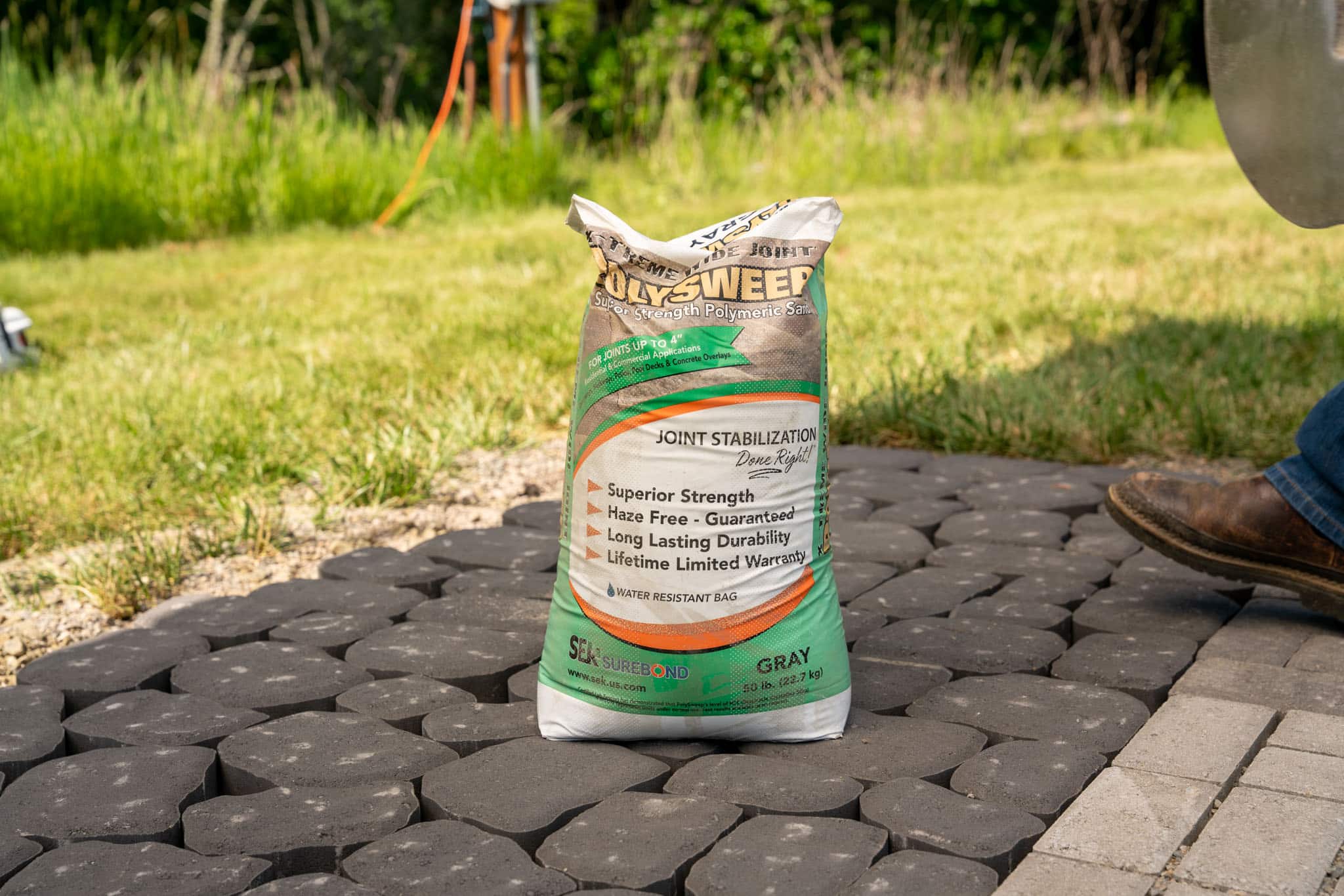
There are a lot of applications for this. In our example, we have our Roma stone with irregular-sized joints that vary; you could also do this in ceramic tile with wide joints or natural flagstone with wide joints. It all works well, and the installation process is the same.
Everything must be dry—like the surface of the stone and the bedding material underneath them—to ensure proper installation. The last thing you want to do is get something wet on the surface and have sand stick to it. It’s tough to remove. Standard and wide-joint applications both reap the benefits of polymeric sand: you reduce moss, you reduce weeds, and you get flexibility when you need it.
4. Resin Joint Sand
Another product for wider joint applications is a wet sweep sand.
We use Azpects EASYJoint, and the cool thing about EASYJoint is that it’s very permeable. It applies relatively simply to water. You get everything wet and sweep it in. You must ensure nothing is bone dry because the sand won’t adhere.
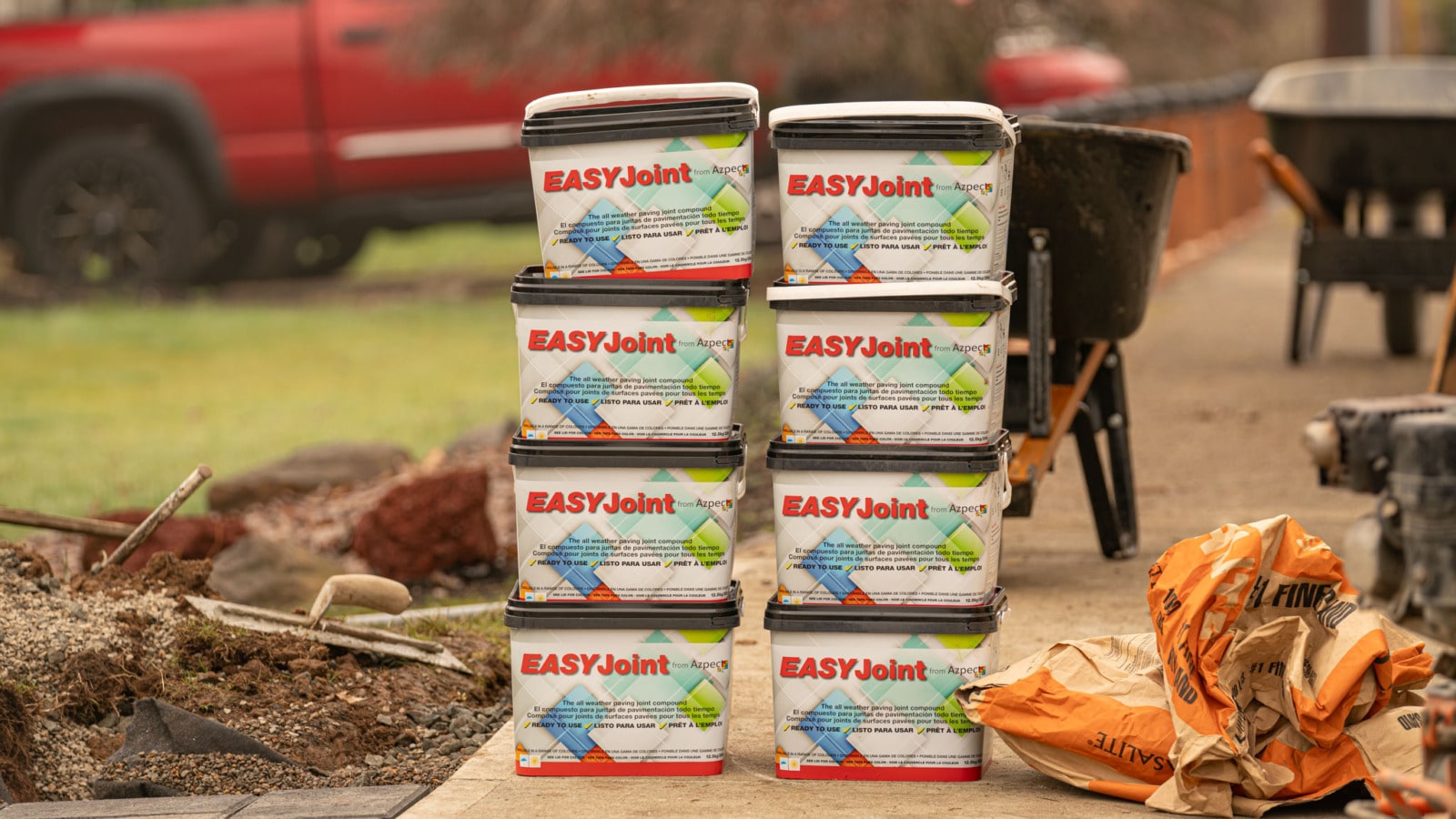
The only drawbacks to EASYJoint are that it might not be readily available in your area, it’s slightly more expensive than traditional polymeric sands, and it can’t be used for vehicular application. Aside from that, it’s an excellent product with lots of permeability, reduces moss and weeds, and looks aesthetically pleasing.
5. Crushed Rock
One simple but effective joint material for a wide paver joint application is a crushed clean stone, specifically something 3/8″ to 1/4″.
The nice thing about crushed clean stone is that it’s typically readily available, cost-effective, and super easy to install. It sweeps in the joints very quickly.
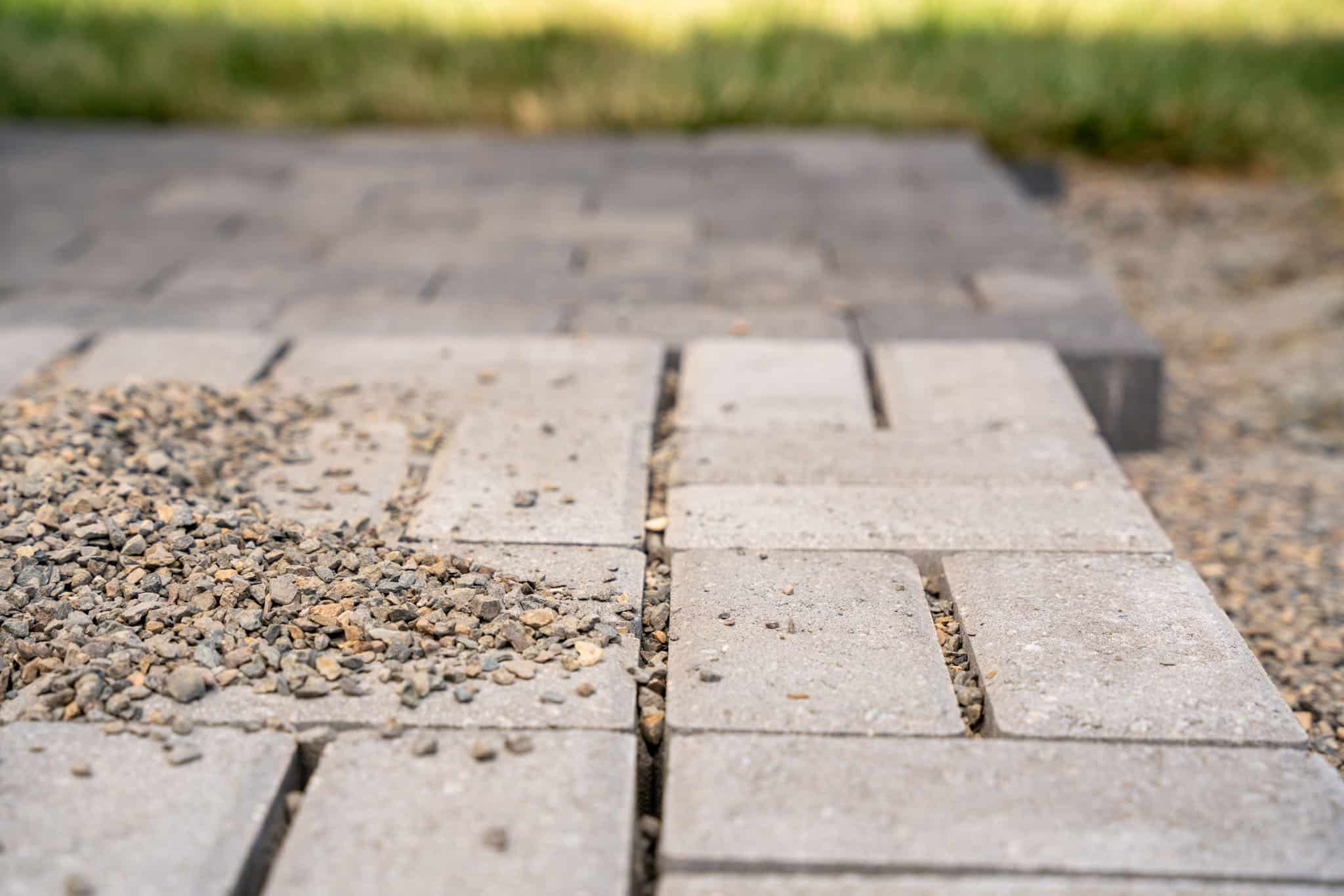
You have to compact those stones to help consolidate everything and maybe rinse off some dirt or dust that may get in there from the process.
Similar to what you would have with bagged dry sand in your sand set paver application, you can accumulate a little bit of moss and weeds, but it still has excellent permeability and function if you need a sound permeable system.
Plan Your Next Paving Stone Project
That’s it! With five different paver joint material options, some for narrow joints and some for wider joints, you’ll surely find the suitable material for your application.
That being said, we have lots of other content on our website to help if you have a hardscape DIY project coming up.
Are you ready to get started laying and cutting stones in your yard? Download our free Project Planning Guide so we can walk you through planning your paver borders.


